Why Silver Houseplants Shine: The Science Behind The Glow
- Foliage Factory
- Jul 21, 2025
- 22 min read
Updated: Jul 26, 2025
Why Silver Houseplants Captivate Us
Most people assume that silver foliage comes from pigments — like the reds and purples produced by anthocyanins. But in truth, silver isn’t a pigment at all. There’s no “silver molecule” at work. Instead, this striking color effect is structural — the result of how light reflects off microscopic features on or within the leaf surface.
And silver isn’t just for show. In nature, this type of broadband reflectance can help plants regulate heat, deter herbivores, or camouflage in dappled light. The shimmer we admire indoors often evolved as a survival mechanism in exposed, stressful, or competitive environments.
In this article, we’ll break down:
What makes silver leaves truly silver, and how this differs from pigment-based variegation
The science of structural coloration, from blister variegation to waxy surfaces and leaf hairs
Why silver traits evolved, and what advantages they offer in the wild
Which houseplants display true, stable silver traits, and which ones only look silvery under certain conditions
How to care for silver-foliage houseplants, and how to preserve their unique reflectivity indoors
Common myths and mistakes, and how to decode what silver leaves are really telling you
Whether you're growing one shimmering Scindapsus or curating a full pewter-toned plant shelf, understanding the biology behind the glow will help you care more precisely — and appreciate it more deeply.

Contents:
1. Not All That Glitters Is Truly Silver
From velvety Scindapsus pictus to shimmering Hoya curtisii, silver-toned houseplants often steal the spotlight. But here’s the catch: not everything that looks silver actually is. Some plants only appear silvery under certain angles or lighting, and the effect often fades as conditions shift. The key difference? Whether that silver is caused by light-reflecting structures — or just an optical illusion.
In plant biology, true silver coloration comes from microscopic features that scatter or reflect light. This is called structural coloration, and it has nothing to do with pigments like chlorophyll or anthocyanins.
Instead, the silver tones are produced by:
Blister variegation, where air-filled gaps between leaf layers reflect light (e.g. Scindapsus pictus)
Trichomes, or dense silver hairs that scatter light and create a velvety effect (e.g. Tradescantia sillamontana)
Waxy cuticles, which refract and diffuse incoming light (common in Peperomia and some Begonia species)
Papillate epidermal cells, whose shapes cause light to bounce in specific ways (seen in Pilea cadierei and Silybum marianum)
Multilayered tissues, which can interfere with light to mimic metallic or iridescent sheens (Begonia pavonina, Selaginella willdenowii)
But many popular “silver” houseplants don’t actually use these mechanisms.
Instead, they may be:
Simply light green with pale patterning, like Philodendron brandtianum, which lacks true reflectance
Variegated due to reduced chlorophyll content — resulting in pale areas, but no structural silver
Or dependent on lighting angles: their waxy or textured surfaces only appear silvery in strong side light
📌 In short: true silver in plants is rare — and structural. It’s more than just a visual trick. It’s a physical adaptation with measurable optical properties, confirmed by electron microscopy and reflectance testing (Sheue et al., 2012)
💡 Understanding this difference matters, especially indoors. Some “silver” plants won’t keep their shine without bright light — not because they’re unhealthy, but because their silver was never structural in the first place.
2. Truly Silver Houseplants – Stable, Structural, and Stunning
What Structural Silvering Really Means
Some houseplants appear unmistakably silver no matter the time of day, viewing angle, or light level. That’s not just pale pigmentation or surface-level variegation — it’s true structural silvering. This phenomenon arises from microscopic features embedded in the leaf’s surface or internal tissues that scatter, reflect, or interfere with light in specific ways. Unlike pigment-based effects, structural silver is anatomical and often genetically fixed, meaning it doesn’t fade or revert under normal growing conditions.
Below is a list of houseplants that exhibit verifiable structural silvering — supported by microscopy, published studies, or strong horticultural consensus.
Truly Silver Houseplants – Stable, Structural, and Stunning
These aren’t just pale or silvery in bright light — they’re anatomically reflective. Each of these houseplants shows true structural silvering confirmed by microscopy, known anatomical traits, or strong expert consensus. Whether through blister variegation, reflective waxes, or dense trichomes, their shimmer is stable and not just a lighting trick.
➜ Swipe through to see real examples of structural silvering — from blister variegation in Scindapsus pictus to waxy shimmer in Hoya and fuzzy trichomes on Pilea.
Common “Silver” Plants That Aren’t Structurally Reflective
These plants might appear silvery at first glance — but their shine comes from reduced chlorophyll, pigment layering, or temporary juvenile traits, not from anatomical reflectors. As a result, their silvery appearance often fades with age or low light.
✗ Philodendron brandtianum
Silvery patches are due to chlorophyll deficiency in juvenile tissue. The effect fades as the leaf matures and does not involve structural reflectance.
✗ Monstera siltepecana
Juvenile leaves show soft silver tones caused by low chlorophyll and possible surface waxes. These traits diminish with age and shifting conditions — not anatomically fixed.
✗ Anthurium crystallinum & Anthurium clarinervium
Bright veins appear silver only due to contrast between light-colored veins and dark lamina. There's no reflective surface structure — the tissue isn’t actually silver.
✗ Ceropegia woodii
Silvery mottling on the leaves is pigment-based, caused by reduced chlorophyll in patterned zones. It’s not structural and can fade in low light or as leaves mature. No reflective anatomy is involved.
✗ Maranta leuconeura ‘Silver Band’
The central silver stripe comes from pigment reduction along the midrib, not anatomical reflectance. It’s a color effect that may vary with light and age, lacking structural traits like air gaps or wax-based scattering.
Why Structural Silver Matters for Indoor Plants
Stability: True structural silver remains visible even in moderate or diffuse light, unlike pigment-based effects that often fade in shade.
Functionality: Traits like trichomes or blister variegation can reduce transpiration and help protect against light stress, making these plants more resilient in sunny windows.
Visual Reliability: Anatomical reflectance ensures plants keep their silvery aesthetic without needing intense light — making them better suited for real indoor conditions.
3. How Plants Create Silver – Light, Structure, and Microscopic Design
Silver in houseplants isn’t caused by pigments.
Unlike reds, purples, or greens — which are produced by chemical compounds like anthocyanins or chlorophyll — silver tones usually result from high reflectance, caused by anatomical structures rather than color-producing molecules.
This phenomenon is called structural coloration, and it has more in common with a butterfly wing than with beetroot juice.
Let’s break it down.
Blister Variegation: How Air Pockets Make Leaves Look Silver
One of the most common silver-producing mechanisms in tropical foliage like Scindapsus pictus.
Inside the leaf, an air-filled gap forms between the upper epidermis and the palisade mesophyll.
When light hits this layer, much of it reflects outward before penetrating — creating a shimmery, metallic look in those regions.
This type of variegation is structural and genetically stable, meaning it doesn’t fade in lower light.(Zhang et al., 2020; Pao et al., 2020)

Reflective Cuticular Waxes
Some plants form a thick, light-scattering wax coating made of crystallized compounds like alkanes.
These waxes scatter light across the leaf surface, producing silver or bluish tones.
The effect depends somewhat on light angle and intensity — but remains relatively consistent indoors.
Seen in: Hoya curtisii, Peperomia spp., Senecio spp., various succulents(Lee, 2007; Landi et al., 2015; Tanaka et al., 2008)
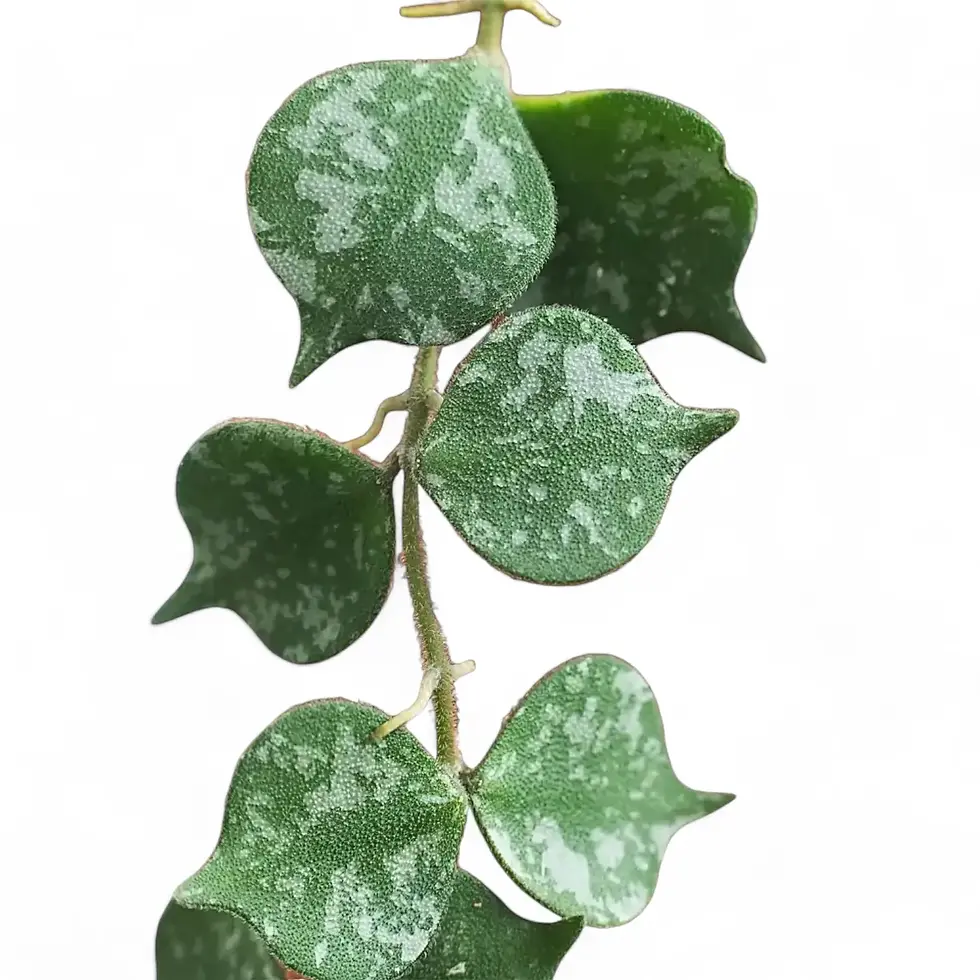
Papillae – Microscopic Surface Bumps
Some species develop tiny dome-like structures on their upper epidermis — called papillae.
These bumps scatter and refract incoming light, causing a soft metallic shimmer.
When combined with pale tissue underneath, the contrast becomes even more intense.
Confirmed in: Pilea cadierei (Sheue et al., 2012), Silybum marianum (Shelef et al., 2019)Also works synergistically with blister variegation and surface waxes.

Trichomes – Fine Leaf Hairs
Some silver foliage gets its shimmer from dense, non-glandular trichomes (leaf hairs).
These hairs scatter visible light, creating a silvery or frosted appearance.
They also reduce water loss, deter pests, and offer UV protection — an adaptive trait in high-light or arid habitats.
Seen in: Tradescantia sillamontana, Dichondra argentea, Stachys byzantina(Givnish, 1990; Chalker-Scott, 1999)

Internal Reflective Structures
In rare cases, the silver comes from sub-epidermal structures — organized internal layers that reflect light back through the leaf.
May involve modified mesophyll, bundle sheath extensions, or other multi-layer arrangements.
These are harder to detect but contribute to metallic or mirror-like tones.
Seen occasionally in: Alocasia spp., some Begonia hybrids

❌ What Silver Is Not
It’s not anthocyanin. While red and purple pigments can enable non-green photosynthesis in deep-shade plants, they do not produce silver tones.
It’s not chlorophyll masking — that results in pale greens, not reflectivity.
It’s not just lighting — true silver stays visible in shade or diffuse light and doesn’t vanish when lighting shifts.
It’s not a deficiency — silver patches don’t follow nutrient-related patterns like chlorosis does (e.g., between veins or on older leaves first).
📌 Key Takeaway
Silver in plants is a structural illusion — not a pigment reality.
And like all good illusions, it’s built from physical design: air gaps, waxes, surface bumps, light-bending layers, and dense trichomes. Each of these affects reflectance — how light bounces off or within the leaf.
Understanding these structures helps you:
Identify plants with stable, structural silver
Avoid being misled by temporary lighting effects or low-chlorophyll variegation
Care for silver-leaved species without damaging their reflective surfaces
4. Why Plants Evolve Silver Leaves – The Biology Behind the Beauty
Silver foliage isn’t just for show. That metallic shimmer, that frosted sheen — it’s often an evolutionary side effect of surviving heat, drought, UV, or hungry herbivores.
Let’s unpack the most common ecological drivers behind silver coloration in plants, with insights from plant physiology, evolutionary ecology, and optical biology.
Light Management in Harsh Conditions
Silver leaves help plants cope with excessive sunlight — whether on open rocky slopes, tropical canopy gaps, or exposed drylands.
Reflective surfaces bounce off intense solar radiation, reducing the risk of photodamage (Shelef et al., 2019; Landi et al., 2015).
These adaptations can cool leaf tissue by several degrees, protecting sensitive chloroplasts during peak UV exposure.
In some shade-dwelling species, silver variegation helps redirect stray light deeper into the leaf, enhancing low-light photosynthesis (Niinemets & Sack, 2006).
➜ Example: Silybum marianum (milk thistle) uses white-silver patches to reflect infrared radiation and reduce internal heat.
Camouflage and Herbivore Deterrence
Silver variegation can serve as visual deception — confusing insects or mimicking damage.
Mottled patterns may resemble insect-scarred or lichen-covered leaves, causing grazers to skip them.
Irregular contrasts disrupt leaf outlines, making them harder to target.
Dense trichomes act as a physical barrier against small chewing pests.
➜ Example: Stachys byzantina deters herbivores with its thick, silvery trichomes that reflect light and physically block access. (Soltau et al., 2009; Cooney et al., 2012)
Water Retention and Heat Regulation
In arid or windy climates, reflective silver surfaces protect against dehydration:
Cooler leaf surfaces lower evaporation rates.
Reduced transpiration helps conserve moisture.
Hairy layers or waxes trap still air, buffering the leaf from desiccating winds (Landi et al., 2015).
➜ Example: Dichondra argentea, native to dry grasslands, uses silver hairs to retain moisture and reduce heat stress.
Silver as a Side Effect
Sometimes, silver isn’t directly adaptive — it’s an incidental outcome of other anatomical changes.
Blister variegation may stem from leaf tissue rearrangement that also affects gas exchange or light absorption.
Waxy coatings might evolve first for UV protection or pest defense — with reflectivity as a bonus effect.
💡Evolution rarely aims for aesthetics — but silver often emerges alongside survival-critical traits.
Summary: Why Silver Evolves (A functional view of silver foliage traits)
Function | How Silver Helps | Common In… |
Sun/UV protection | Reflects light, reduces leaf temperature | Deserts, tropical gaps, alpine zones |
Water conservation | Reduces heat and transpiration | Arid-zone plants, epiphytes |
Herbivore deterrence | Mimics damage or lichen, scatters light | Variegated herbs, fuzzy ornamentals |
Light efficiency | Redirects light in dim conditions | Understory tropicals, Begonia spp. |
Byproduct effect | Reflectivity from waxes or cell layers | Many silver-tinged foliage plants |
Why It Matters Indoors
Understanding why plants evolved silver traits helps you care for them better. If a plant developed reflective surfaces to beat the heat, for example, it probably still prefers good airflow and strong light indoors.
And it’s a good reminder: what we call “beautiful” is often a survival story — written in wax, air, and cell structure.

5. Is Silver Variegation Stable in Houseplants?
Not all silver-toned houseplants are created equal — especially when it comes to how long that shimmering look lasts.
Some silver traits are built into the plant’s anatomy and stay consistent no matter what. Others are fickle — fading with changes in light, temperature, or age. Here’s how to tell the difference.
Structural Silver = Long-Term Stability
The most reliable silver tones come from physical features on the leaf surface — not pigments.
These include:
Blister variegation: air-filled gaps between epidermal layers
Multi-layered cuticles: microscopic layers that scatter or bend light
Reflective wax coatings or silvery trichomes: scatter light and create matte or glowy silver effects
These structures don’t rely on pigments that can degrade. As long as the plant stays healthy, the silver will remain.
💡Note: Iridoplasts — specialized reflective chloroplasts — occur in deep-shade species like Begonia pavonina and Selaginella, but are rare in common houseplants
Stable examples:
Hoya curtisii – sunken veins, blistered texture
Peperomia argyreia – reflective striping
Pilea glauca – silver from waxy trichomes and surface cells
Pigment-Based Silver = Conditional or Short-Lived
Some plants appear silvery due to:
High anthocyanin or flavonoid content (deep red + wax = silvery)
Low chlorophyll levels, especially in young or stressed tissue
Environmental stress, like cold, drought, or nutrient shifts
But these pigment-based effects are unstable. The silvery tones often fade as conditions change.
➜ Example: Hoya ‘Grey Ghost’ looks beautifully silver in cool, bright setups — but in low light or warm rooms, it reverts to dull greenish tones.
Chimeras – The Genetic Wild Card
Some variegation comes from chimeras — plants with two distinct genetic cell lines. These can include pale grey or silvery-looking sectors.
But:
They’re not structurally reflective
The color can revert if one cell line dominates
They’re often unstable over time or under stress
➜ Example: Philodendron 'Pink Princess' or Monstera albo may develop silvery tones — but it’s not reflective silver, and it can disappear over time.
Light Illusions – Silver That Isn't
Some plants look silver at first glance but don’t hold that look under all conditions.
This includes:
Juvenile leaves with soft wax or low pigment
Moist or dewy surfaces that reflect temporarily
Leaves that shine under oblique lighting, but appear plain in shade
These aren’t structural traits — they’re visual illusions.
❗ Red flag phrases to watch for in listings:
“Appears silver under bright light”
“Young leaves start silvery, then turn green”
“Silvery glow in the right conditions”
Summary: What Makes Silver Last?
Trait | Stable Over Time? | Notes |
Reflective wax layers | ✅ Yes | Genetically encoded, stays silver in most conditions |
Trichome-based silver | ✅ Yes | Stable, but may lessen with age or poor health |
Blister variegation | ✅ Yes | Structural, does not revert or fade |
Pigment-linked effects | ❌ No | Can shift with light, stress, or maturity |
Chimeral silvery patches | ⚠️ Sometimes | Prone to reversion; varies by cultivar and propagation |
📌 Final Tip:
If you want truly silver foliage that won’t fade or change with the seasons, go for plants with anatomical silver — not those that rely on stress pigments, lighting tricks, or chimeras.

6. How to Care for Silver-Leaved Houseplants Indoors
Silver-foliage plants might look rare or high-maintenance — but if you understand how their shimmer forms, they’re surprisingly easy to care for. The goal is to support the development of structurally healthy leaves, since that’s where the silver lives.
Here’s how to get it right:
Light: Give Them What They Need to Reflect
Silver effects come from microscopic structures — and those only form properly with enough light.
Aim for bright, indirect light, ideally near east- or south-facing windows.
Low light = dull, flat, or greenish leaves that lack reflectivity.
Skip harsh midday sun for sensitive species like Hoya, but don’t treat them like low-light plants.
💡 If new leaves grow small, flat, or lose their silver, lighting is likely the culprit — not fertilizer or humidity.
Watering: Keep It Steady
Most silver-leaf plants don’t need special watering schedules — but they do need consistency.
Let the top third of the soil dry before watering again.
Avoid extremes — fluctuating between dry and soaked stresses the plant and affects leaf quality.
💡Moisture-loving types like Pilea may need slightly more frequent watering.
Substrate: Airy and Well-Draining
Many silver-foliage species have fine, shallow roots prone to rot in dense or soggy soil.
Use:
A light, breathable mix with components like perlite, pumice, or orchid bark.
Semi-hydro substrates like pon or mineral blends also work — just transition roots slowly.
❌ Avoid dense peat or coco-based mixes unless heavily amended with drainage material.
Temperature & Airflow: Avoid Extremes
Silver-foliage plants thrive in typical indoor conditions — as long as you keep things stable.
Ideal range: 18–25 °C
Provide gentle air movement, especially for fuzzy-leaved types, to prevent mold or leaf spotting.
Avoid cold drafts, heaters, or radiators — temperature swings distort growth and dull silver surfaces.
Fertilizer: Feed for Growth, Not Color
Silver isn’t pigment-based — fertilizer won’t “intensify” it. But underfeeding will impact leaf quality.
Use a balanced, low-strength fertilizer every 2–4 weeks during active growth.
Go lighter for slow-growers or plants in lower light.
Too much nitrogen = stretched, soft, less silvery growth.
Learn more in our Beginner’s Guide to Fertilizing Houseplants.
Placement: Use Light Angle to Your Advantage
Surface reflectance changes with how light hits the leaf.
Plants with arching leaves (like Peperomia) show more silver when viewed from above.
Try placing them at or above eye level to maximize visual impact.
Rotate plants occasionally to support even growth and silvering.
Cleaning: Keep It Gentle
Dust ruins the effect — but silver surfaces are delicate.
Use a dry microfiber cloth or soft brush to remove buildup.
Never use oil wipes, sprays, or commercial leaf polish.
For plants with dense trichomes (e.g., Pilea glauca), avoid touching the leaves altogether — airflow does more good than scrubbing.
Silver Plant Care at a Glance
Care Area | Best Practices |
|---|---|
Light | Bright indirect; avoid deep shade |
Watering | Keep moisture consistent; no extremes |
Substrate | Loose, well-aerated, fast-draining |
Nutrition | Balanced feeding; no excess |
Placement | Maximize reflectance via position |
Cleaning | Dust gently, avoid leaf-polishing |
7. Common Myths About Silver-Foliage Plants
Silver-colored leaves attract admiration — and plenty of misleading advice. Some tips sound helpful but ignore the actual biology behind silver coloration. Here’s what’s fact, and what’s just plant-shop fiction.
❌ Myth #1: Silver Leaves Come from Pigments
Not true.
Red, purple, or blue foliage often comes from anthocyanins or other pigments — but silver isn’t a color in that sense. There is no silver pigment in plants.
Reality:
Silver tones come from how light interacts with microscopic structures — like blister layers, air pockets, reflective waxes, or dense trichomes.
You can’t enhance these with “color boosters,” high-phosphorus fertilizer, or magic lighting.
The shimmer is physical, not chemical.
❌ Myth #2: Silver Plants Need Less Light
This one’s common with species like Hoya curtisii or Pilea glauca, often labeled as “low-light tolerant.”
Reality: Yes, they tolerate lower light — but that’s not the same as thriving.
In poor light, new growth becomes flat, dull, and greenish, with fewer reflective structures.
The silver may fade, not because of stress, but because the plant doesn’t have enough light to form those layers properly.
💡 Want bold silver? Give them bright indirect light.
❌ Myth #3: Variegation and Silvering Are the Same
It’s easy to confuse them — both affect leaf color — but they’re not the same thing.
Reality:
Variegation is often pigment-related (or caused by chimeric genetics), like white zones in Monstera albo.
Silvering is structural. It comes from surface design, not color loss.
This matters because:
Variegation can revert genetically.
Structural silvering stays visible once formed — but new silvery growth only develops under adequate light and healthy conditions
❌ Myth #4: Humidity Controls Silver Color
Many terrarium keepers assume higher humidity means shinier silver plants.
Reality:
Humidity supports healthy leaf growth, especially in sensitive species — here’s why in Managing Humidity for Healthier Plants.
But it doesn’t enhance silver reflectance — that comes from light angle, surface texture, and growth quality.
In other words: moisture helps the plant grow, but light determines how silver that growth will look.
❌ Myth #5: Silver Plants Are Always Rare or Hard to Keep
Some silver-foliage plants are collector-grade or limited in supply — but many are surprisingly easy-care and widely available.
Reality:
Species like Scindapsus pictus, Pilea glauca, Peperomia caperata 'Silver Ripple', and Hoya curtisii are all beginner-friendly.
Silver leaves do not mean a plant is weak — just that it uses surface physics to survive in the wild.
Summary: Silver-Foliage Myth vs. Reality
Belief | What’s Actually True |
|---|---|
Silver color comes from pigments | ❌ No — it’s all about surface structures |
Low light enhances silver | ❌ No — it usually weakens reflectance |
High humidity boosts silver color | ❌ No — only helps leaf health, not reflectance |
All silver plants are rare or fussy | ❌ No — many are easy and common |
Silver = variegation | ❌ No — different mechanism and care requirements |

Conclusion – Silver Foliage Is Function, Not Fantasy
That silvery shimmer isn’t just aesthetic — it’s the visible outcome of real evolutionary adaptations. Whether it’s light-scattering air pockets, waxy cuticles, or dense trichomes, silver foliage reflects how plants handle harsh light, drought, grazing pressure, and more.
For indoor growers, this isn’t trivia. It affects care. Structurally silver leaves aren’t enhanced by tricks — they’re preserved by supporting healthy, anatomically complete growth: stable lighting, consistent watering, and breathable substrates.
So whether you’re growing a single Scindapsus pictus or a shelf of glinting Hoya, knowing what creates that silver helps you make better choices — and grow with more intention.
Because every metallic leaf isn’t just pretty — it’s engineered light management, written in layers of biology.
➜ Explore our Silver Foliage Collection — from true structurally silver species to stunning silver-look cultivars, all in one curated section.
FAQ: Silver-Foliage Houseplants – Facts, Stability, and Misconceptions
Q1: Is Anthurium 'Silver Blush' truly a silver-leaf plant?
A: Not in the structural sense. The pale zones on Anthurium 'Silver Blush' are the result of reduced chlorophyll in localized pigment areas, not light-scattering microstructures. While it may appear silver in certain lighting, especially under LEDs or at an angle, it lacks the anatomical traits (like blister variegation or dense trichomes) that produce consistent reflectance. As a result, its coloration may vary between leaves and under different conditions — and should not be considered a structurally silver species.
Q2: Do Aglaonema 'Silver Bay' and 'Silver Queen' have reflective anatomy?
A: No. Their pale tones come from internal pigment distribution — not surface structure. Both cultivars are bred for soft, grey-green zones that mimic a silvery appearance but don’t reflect light in the way structurally silver plants do. They lack blister layers, trichomes, or wax-based reflectance. The silver coloration may look more pronounced under bright light but won't shimmer or change with angle like true reflective foliage.
Q3: Is Dracaena (Sansevieria) 'Metallica' actually metallic?
A: The name is misleading. Dracaena trifasciata 'Metallica' (often sold under Sansevieria) has a dull, dark green base with a slight blue-grey overlay — but this effect is caused by diffuse wax or epidermal smoothness, not a structured reflective surface. Under low indoor light, it can appear matte or flat. It doesn’t qualify as a silver-leaf plant in a botanical or physiological sense.
Q4: Why do some plants look silver when young, then turn green?
A: Many species display temporary silver tones in juvenile leaves due to wax layers, soft epidermal textures, or leaf angle. As the leaf matures, these traits often diminish. For example, Hoya carnosa 'Grey Ghost' may start out with silver-tinged foliage in high light and cool temperatures but fade to green in warmth or shade. These aren't fixed anatomical traits — they’re temporary effects based on development and environment.
Q5: Can fertilizer, humidity, or light increase silver coloration?
A: Only indirectly. Structural silver is physical — formed by features like blister layers, wax, or trichomes — not something you can “boost” with care tricks. However:
Light affects how those features develop: insufficient light may cause thinner, greener leaves with reduced reflectance.
Humidity helps plants grow better but does not enhance silver tones.
Fertilizer supports general leaf health but does not induce silvering. Overfeeding may even reduce structural development by promoting soft, elongated foliage with weaker optical traits.
Q6: How can I tell if a plant’s silver is stable or temporary?
A: Look for these indicators:
✅ Consistent silver on every mature leaf = likely structural.
⚠️ Only on juvenile leaves = temporary or stress-linked.
❌ Phrases like “appears silver in strong light” or “new leaves start silvery” = red flag for non-permanent traits.Plants with true reflective anatomy (like Scindapsus pictus or Pilea glauca) maintain their silver long-term. In contrast, pigment-linked silver (e.g. from low chlorophyll) can fade or shift depending on light, age, or stress.
Q7: Are all silver plants rare or difficult to care for?
A: No. Many structurally silver plants are beginner-friendly if their basic needs are met:
Scindapsus pictus, Pilea pubescens 'Silver Tree', and Hoya curtisii are reliable, adaptable species that tolerate average indoor conditions.
The care challenge often arises from misunderstanding their needs — especially light. Silver plants need sufficient brightness to build healthy anatomy, not dark corners.
On the other hand, species like Alocasia nebula 'Silver' or Homalomena 'Platinum Velvet' may be more sensitive due to moisture preferences or humidity demands — not because they’re silver.
Q8: Is silver variegation the same as white variegation?
A: No — and confusing them leads to care mistakes.
White or cream variegation is typically pigment-based and often involves genetic chimeras. It reduces chlorophyll and can impact photosynthesis.
Silver coloration is usually structural, involving surface features like blistering, waxes, or trichomes. It does not impair photosynthesis and is often more stable.This distinction matters: pigment-variegated plants often need gentler light and are prone to reversion. Structurally silver plants, by contrast, often thrive in brighter light and don’t revert the same way.
Q9: What are the most reliable silver-foliage houseplants for indoor growers?
A: Based on structural traits (not just pigment or illusion), these are among the most stable:
Scindapsus pictus 'Exotica' – blister variegation
Hoya curtisii 'Silver' – sunken vein structure + wax
Pilea pubescens 'Silver Tree' – fine trichomes and epidermal reflectance
Hoya krohniana 'Super Silver' – consistent surface reflectance
Peperomia argyreia – layered reflective leaf stripesAvoid relying solely on names. Always check how the silver effect is produced.
Q10: Can silver traits revert like in chimeral variegated plants?
A: Not in the same way. Structural silvering is anatomical — it’s determined by how the leaf develops, not by layered cell genetics like in chimeras. Once formed, those reflective structures remain stable on existing leaves. However, if a plant gets insufficient light or suffers stress, new growth may lack silver traits, even if the genetics haven’t changed. By contrast, chimeral variegation can genetically revert when one cell lineage outcompetes the other. So if your silver plant starts producing plain green leaves, it’s likely environmental — not genetic reversion.
Q11: Is Alocasia baginda 'Silver Dragon' a structurally silver plant?
A: Yes — partially. Alocasia baginda 'Silver Dragon' shows stable silver coloration caused by convex epidermal cells, thick cuticle layering, and surface texture that scatters light. This creates a consistent, silvery sheen that’s visible under a range of light angles. However, it’s not pure blister variegation. While not formally studied in peer-reviewed papers, microscopy and horticultural analysis suggest that its reflective appearance stems from surface anatomy, not pigment dilution. The silver effect is structural and moderately stable, though new leaves may appear dull if light is insufficient.
Q12: Does Alocasia heterophylla 'Dragon's Tooth' have true structural silvering?
A: Not entirely. Alocasia heterophylla 'Dragon's Tooth' has silvery-grey coloration, but it likely comes from light chlorophyll reduction combined with soft surface reflectance — not true structural silvering. The metallic effect can vary depending on angle and lighting intensity, which suggests a partial optical illusion rather than a fixed anatomical trait. Some leaf zones may have thin wax or subtle epidermal undulations, but this cultivar does not consistently reflect light like Scindapsus pictus or Pilea cadierei. It’s best described as semi-structural with variable persistence depending on growing conditions.
Glossary of Terms
Anthocyanin
A water-soluble pigment responsible for red, purple, and blue coloration in plants. It does not create silver tones.
Blister Variegation
A structural effect where air spaces form between leaf layers, causing bulging and light reflection that appears silver.
Chimera
A plant made up of genetically distinct cell layers. Often the cause of pigment-based variegation (e.g. white or yellow patches).
Epidermis
The outermost cell layer of a leaf. Its structure can influence light reflectance and contribute to coloration.
Glaucous
A waxy, bluish-silver surface coating. Often removable by touch and common in drought-adapted species.
Non-Green Photosynthesis
Photosynthetic activity in tissues that lack chlorophyll, using alternate pigments. Does not cause silver appearance.
Reflectance
The way light bounces off a surface. High reflectance can cause silvery or pale visual effects, even without pigments.
Structural Coloration
Color produced by microscopic physical structures that scatter or interfere with light — not by chemical pigments.
Trichomes
Small hairs on plant surfaces that can reflect light, reduce water loss, protect against pests, and create a silvery or fuzzy look.
Variegation
Any visual variation in plant color. Can be due to pigment changes (like chlorophyll loss) or structural traits (like silver).
Wax Cuticle
A protective, water-repellent leaf coating made of wax. When dense or layered, it can scatter light and appear silver.
Zonation
The presence of defined zones on a leaf, often caused by differences in structure, pigment concentration, or light reflection.
Sources and Further Reading:
Aernouts, B., Van Roy, J., Mouazen, A. M., & Saeys, W. (2021). Fast and non-destructive measurement of leaf internal structure by spectral scattering imaging. Plant Methods, 17(1), 1–13. https://doi.org/10.1186/s13007-021-00816-4
Barthlott, W., & Ehler, N. (1977). Raster-Elektronenmikroskopie der Epidermis-Oberflächen von Spermatophyten. Tropische und subtropische Pflanzenwelt, 19, 1–105. https://scholar.google.com/scholar_lookup?title=Raster-Elektronenmikroskopie%20der%20Epidermis-Oberfl%C3%A4chen%20von%20Spermatophyten
Barthlott, W., Mail, M., Bhushan, B., & Koch, K. (2017). Plant surfaces: Structures and functions for biomimetic innovations. Nano-Micro Letters, 9, 23. https://doi.org/10.1007/s40820-016-0125-1
Brewer, C. A., & Smith, W. K. (1997). Patterns of leaf surface wetness for montane and subalpine plants. Plant, Cell & Environment, 20(1), 1–11. https://doi.org/10.1046/j.1365-3040.1997.d01-15.x
Huang, W., Chen, Q., & Zhang, S.-B. (2020). Uncovering the mechanisms of novel foliar variegation patterns caused by structures and pigments. ResearchGate. https://www.researchgate.net/publication/339927682
Jetter, R., Schäffer, S., & Riederer, M. (2008). Hydrophobic trichome layers and epicuticular wax powders in Bromeliaceae. Botany, 86(5), 505–514. https://www.researchgate.net/publication/51215855
Koch, K., Dommisse, A., & Barthlott, W. (2008). Water-repellent plant surfaces: Cuticular structure and functional morphology. In J. A. Callow (Ed.), Advances in Botanical Research (Vol. 46, pp. 285–324). Academic Press. https://doi.org/10.1016/S0079-6425(08)00007-5
Landi, M., Tattini, M., & Gould, K. S. (2019). Multiple functional roles of anthocyanins in plant–environment interactions. Plant, Cell & Environment, 42(4), 700–717. https://doi.org/10.1111/pce.13187
Lee, D. W. (2007). Nature’s palette: The science of plant color. Faraday Discussions, 139, 49–62. https://doi.org/10.1039/B704798J
Niinemets, Ü., & Sack, L. (2006). Structural determinants of leaf optical properties in sun and shade environments. American Journal of Botany, 93(4), 541–553. https://doi.org/10.3732/ajb.93.4.541
Schulte, A. J., & Koch, K. (2010). Plant tissue optics: Micro- and nanostructures. ResearchGate. https://www.researchgate.net/publication/253771970
Shelef, O., Weisberg, P. J., & Provenza, F. D. (2019). Reflective white patches on leaves reduce heat load. iScience, 20, 344–355. https://doi.org/10.1016/j.isci.2019.09.036
Sheue, C.-R., Pao, S.-H., Chien, L.-F., Chesson, P., & Peng, C.-I. (2012). Natural foliar variegation without costs? The case of Pilea cadierei. Annals of Botany, 109(6), 1065–1074. https://doi.org/10.1093/aob/mcs029
Taiz, L., Zeiger, E., Møller, I. M., & Murphy, A. (2021). Plant Physiology and Development (7th ed.). Sinauer Associates / Oxford University Press. https://learninglink.oup.com/access/taiz7e
Zhou, Y., Li, H., Deng, M., & Zhao, L. (2023). Molecular and structural mechanisms underlying variegation in ornamental plants. Planta, 258, 46. https://doi.org/10.1007/s00425-023-04167-3

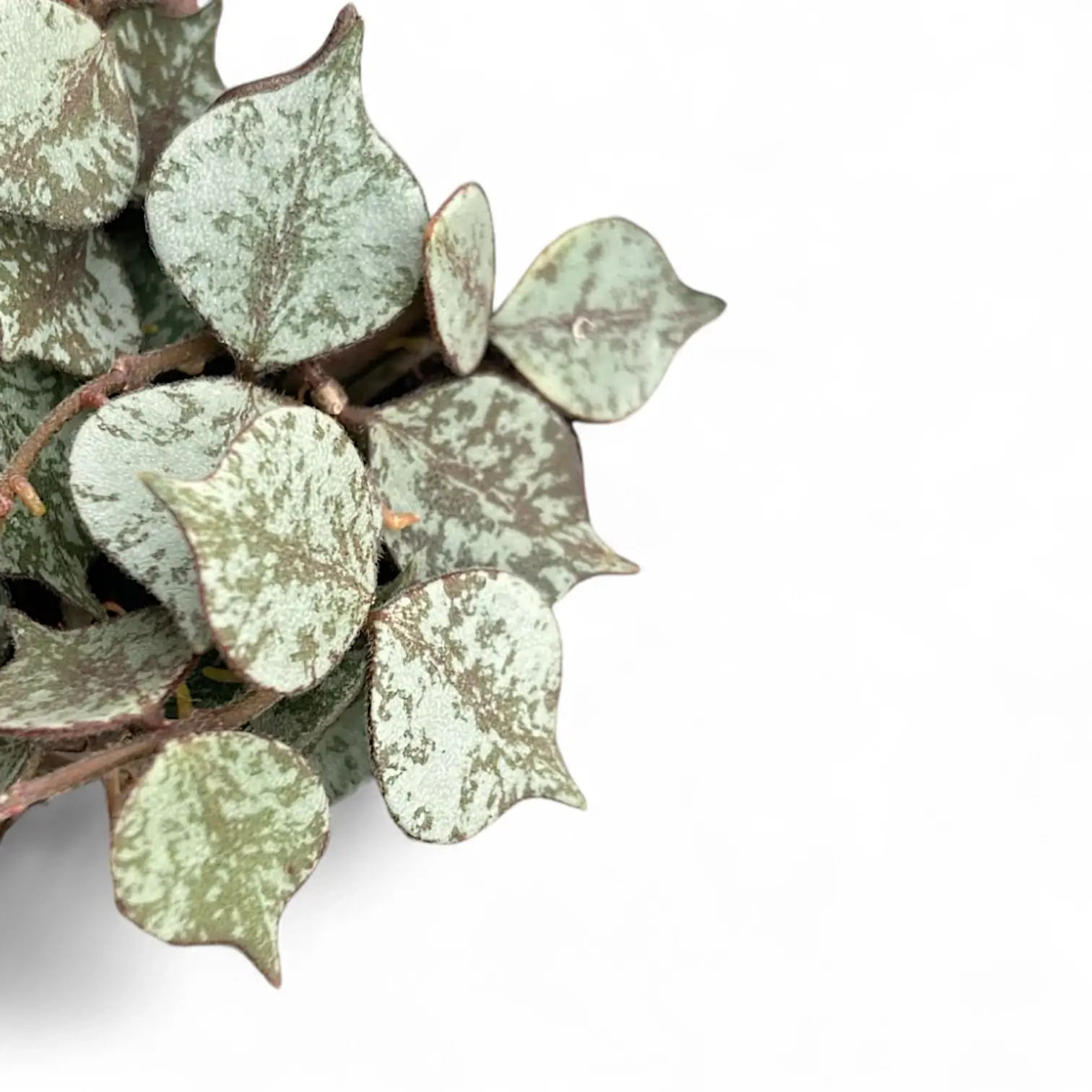


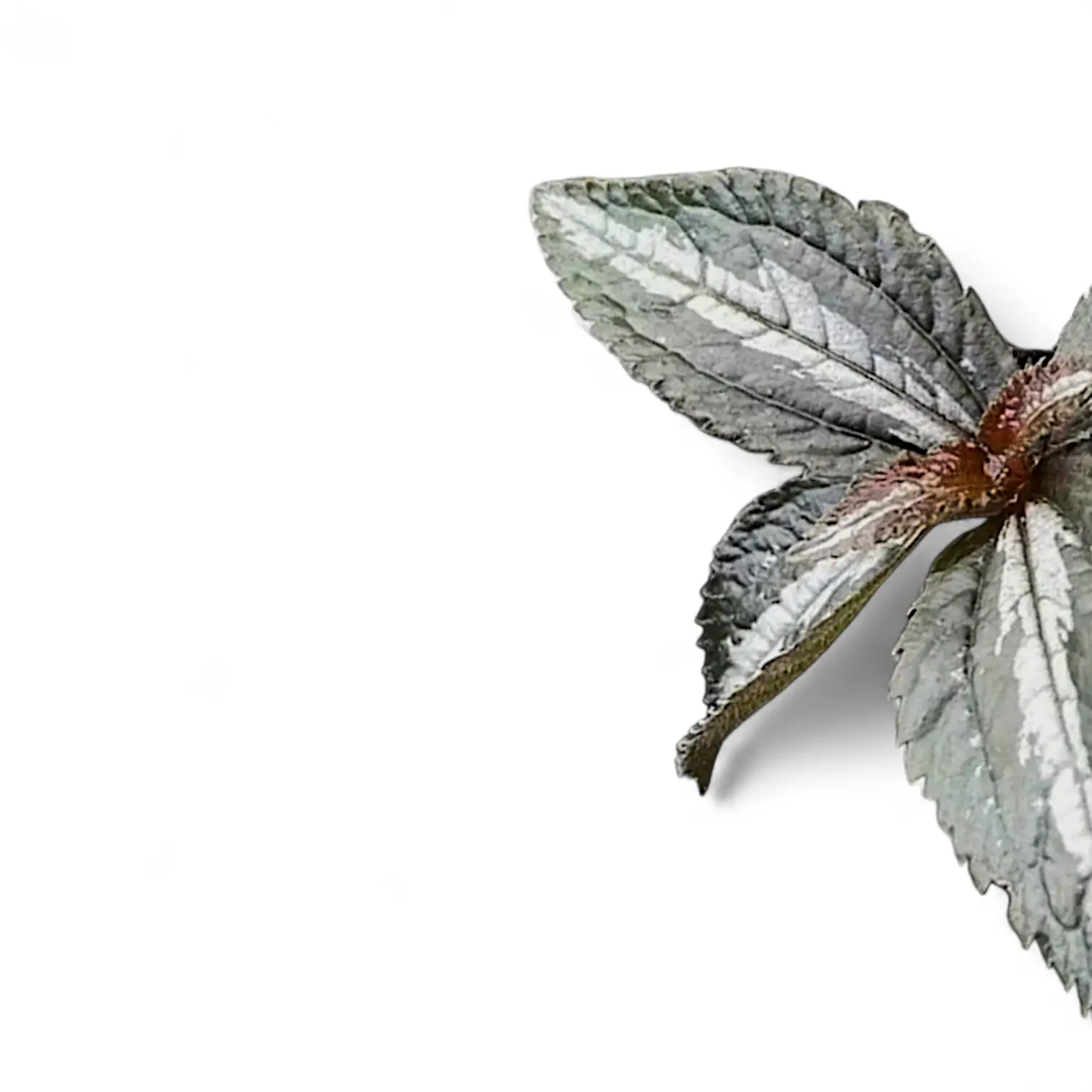
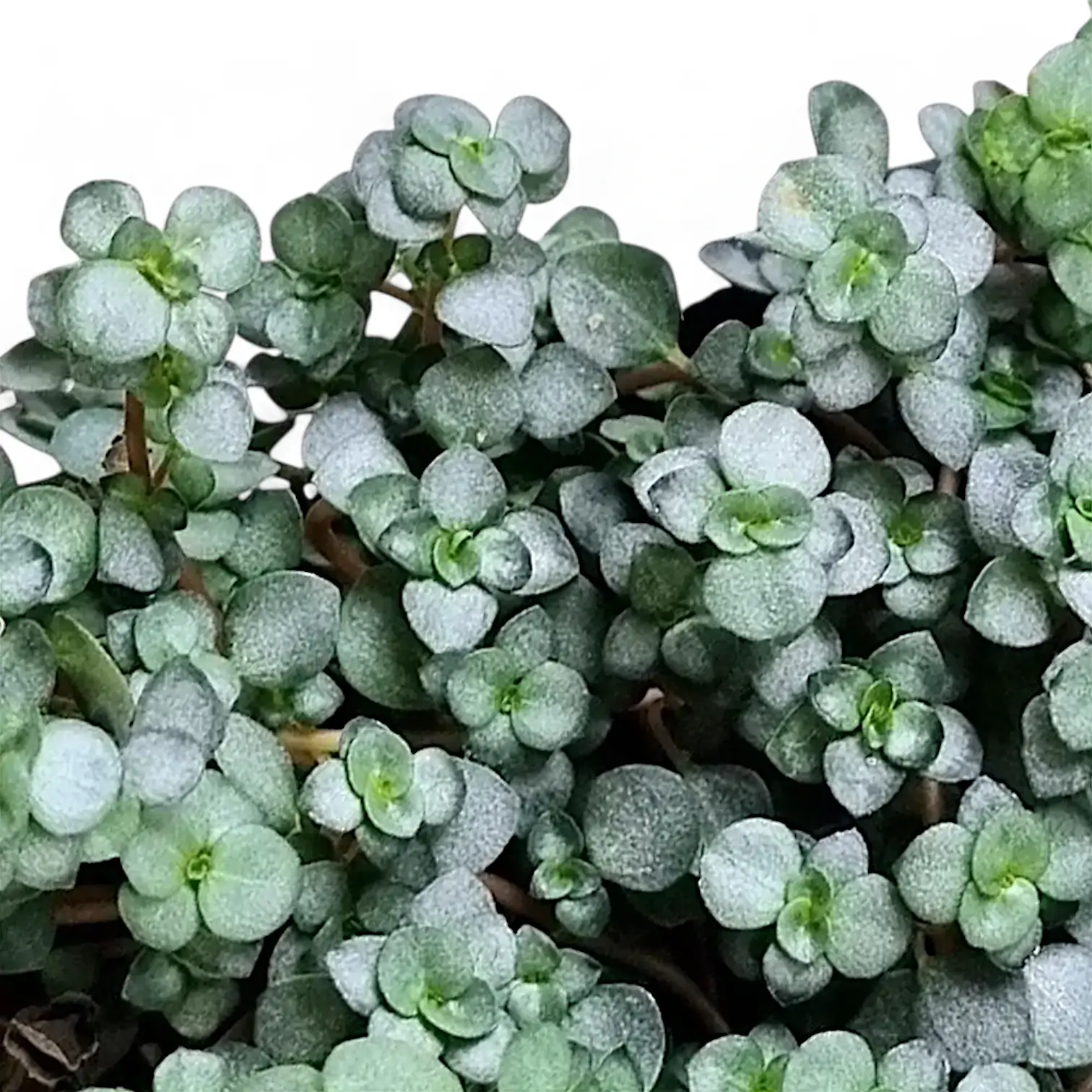

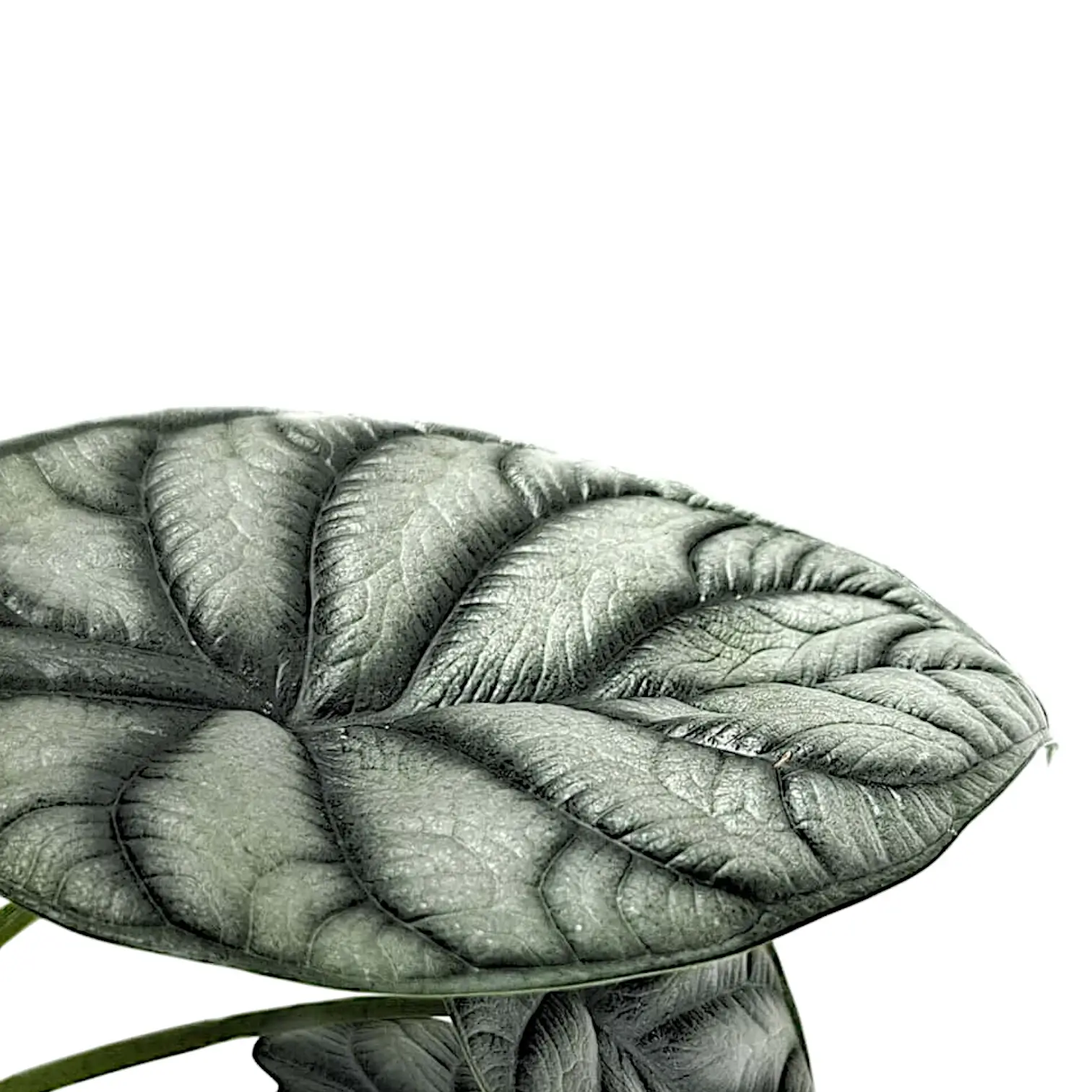
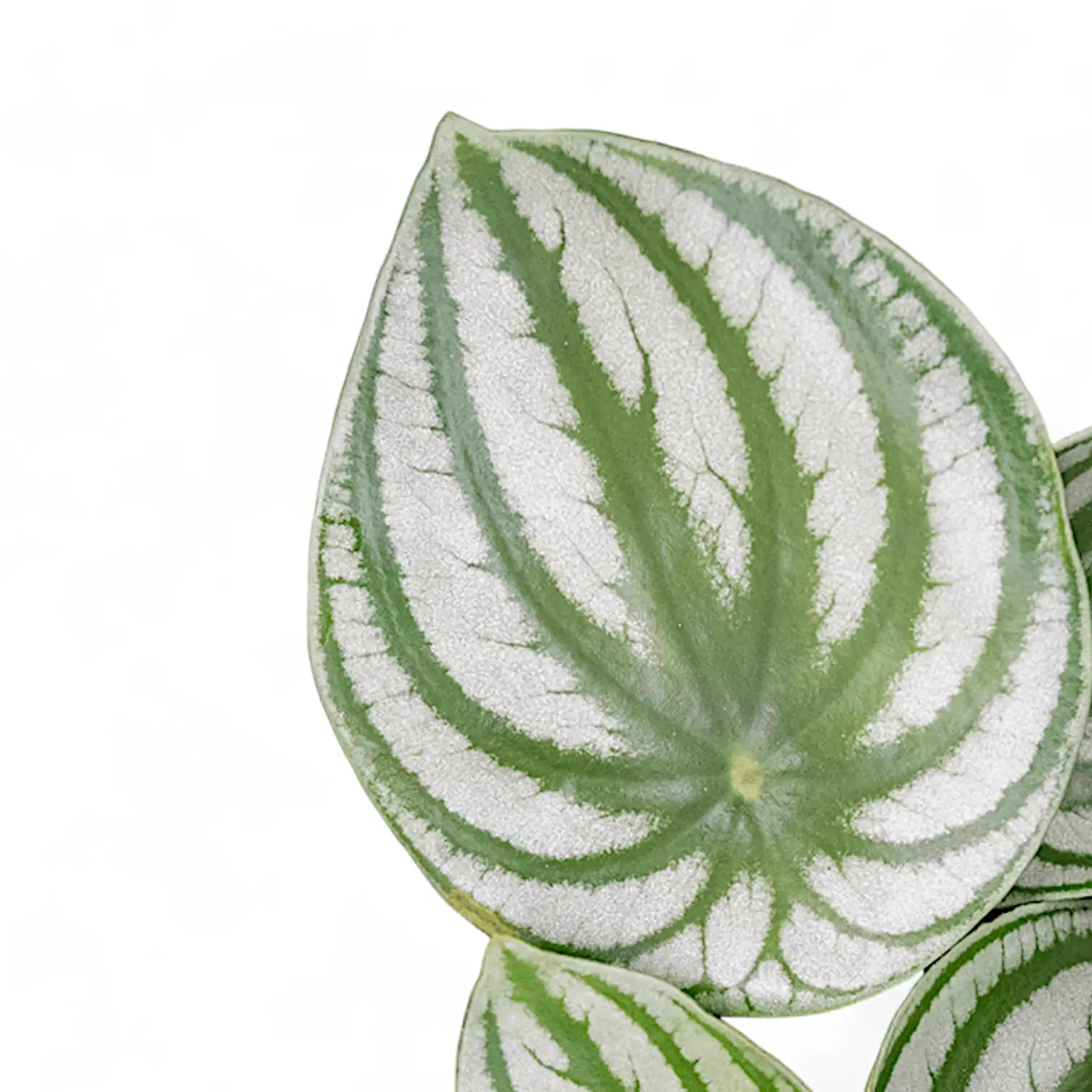



Comments